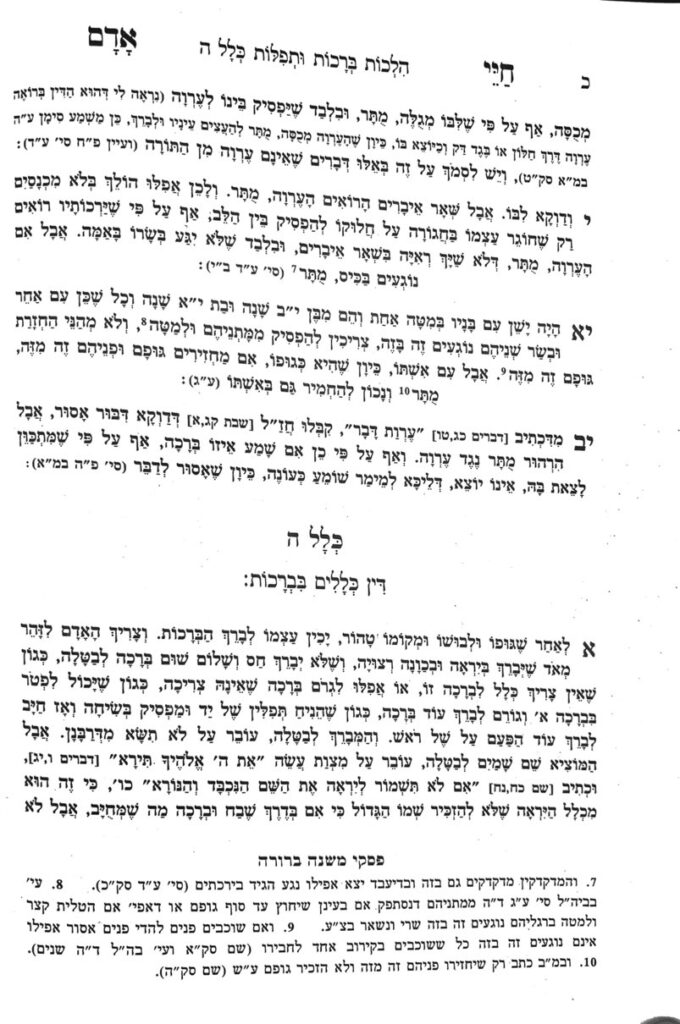We have finished siman 10, and we need to return back to a point we discussed previously. We have learned that the issur reiyah, to see ervah, applies to the eyes and heart. We need to discuss whether the issur applies specifically to seeing a live person, or whether it applies to digital renderings, such as a video, or livestream, or to a photograph or other means as well.
Rav Ovadia Yosef writes in a teshuva that we know that according to the Rashba, the issur deoraysa of ervah applies only to the primary ervah, and Chazal added an issur derabanan to other parts of the body because they recognized that other parts of the body could be a source of hirhur (see hsiur 1574). Therefore, they expanded the issur ervah to other parts of the body. Nonetheless, the primary motivation was the hirhur and distraction which may distract a person during davening or learning. If so, since a digital rendering or photo creates the same hirhur or distraction, it is included in the din derabanan of Chazal. Rav Ovadia brings multiple proofs to this psak.
Seemingly, the issur would only apply according to the Rashba. According to the Rosh, that the issur derabanan was instituted simply as an extension of the issur deoraysa, there would only be an issur if there is a physical ervah present, just like the issur deoraysa.
We have discussed ervah and tzoah covered by glass (shiur 1510 and 1536). Rav Ovadia compares this question of a photograph to the question of ervah covered by glass. He holds that ervah covered by glass does not remove the issur. Therefore, he paskens that one who recites kriyas shema in the presence of an ervah photograph would have to repeat shema.
Halachically, we pasken that there is room to be meikil regarding ervah covered by glass. If so, there is room to be meikil regarding photographs as well.
Even if we do not take Rav Ovadia’s argument to the extent he does, certainly one should be machmir lechatchilla. Thus, lechatchilla, to recite a bracha or learn out loud should be avoided in such a situation. Nevertheless, since this is a question regarding a din derabanan, if one closes their eyes they may recite a bracha or learn.
Summary
Ervah in a digital rendering or a photograph is also assur. However, there is room to be meikil if one already recited a bracha or kriyas shema that they would not need to repeat it. Additionally, since it is a question of an ervah derabanan, one could close their eyes.



